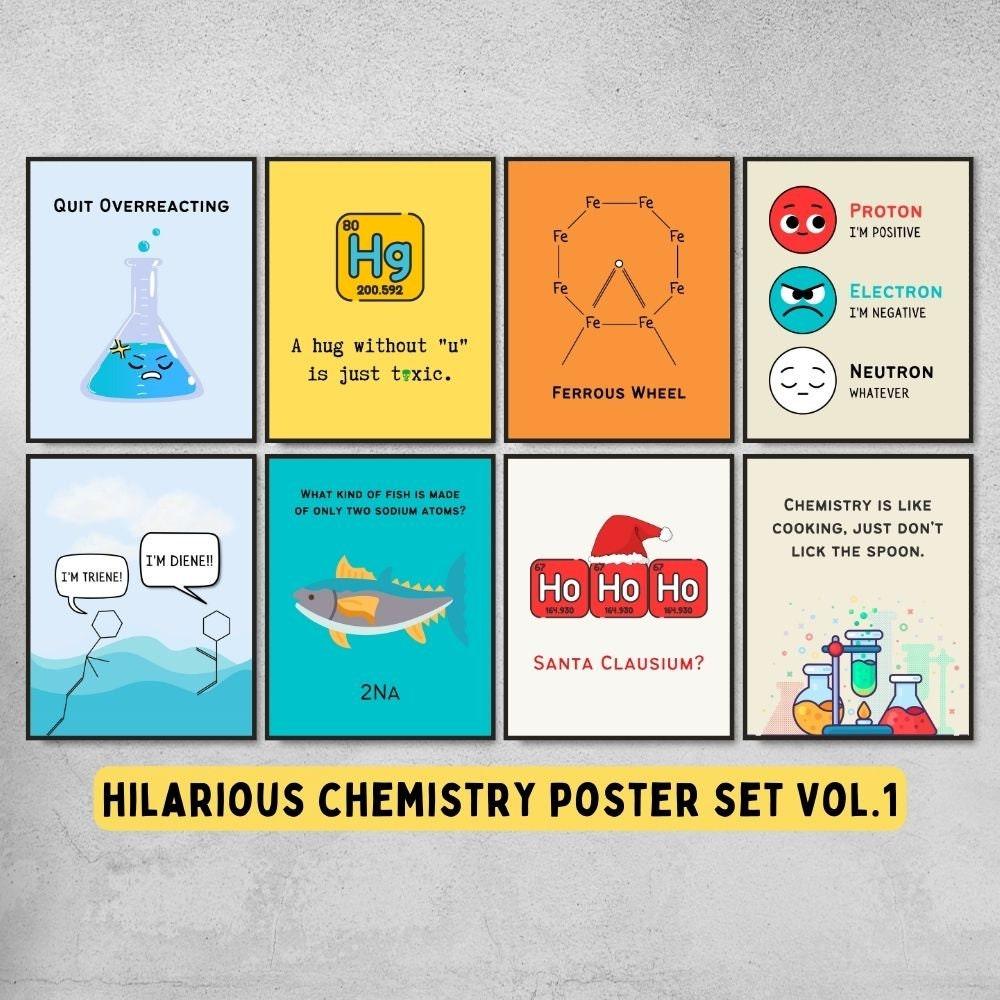Introduction: The Importance of Classroom Decorations
As a chemistry teacher, I’ve learned firsthand how impactful a well-decorated classroom can be. Decorations aren’t just for aesthetics—they serve to motivate, inform, and engage students in their learning journey. A welcoming environment can significantly enhance student participation and interest in the subject matter. In this article, we’ll dive into a variety of chemistry classroom decorations that can transform your space into a vibrant learning hub.
Why Focus on Chemistry Classroom Decorations?
Classroom decorations have a profound effect on student learning. Here are a few reasons why you should prioritize chemistry decorations:
- Encourage Engagement: Engaging visuals can spark curiosity and interest in chemistry concepts.
- Promote Learning: Informative posters can serve as quick references for students, enhancing their understanding.
- Foster a Positive Atmosphere: A well-organized and decorated room creates an inviting space that promotes learning.
Key Elements of Effective Chemistry Decorations
When considering decorations, it’s important to focus on elements that are both decorative and educational. Here’s what to include:
1. Educational Posters
Posters that convey important chemistry concepts or the periodic table can be great focal points. Consider printing vibrant designs that capture attention and illustrate complex ideas succinctly.
2. Interactive Displays
Interactive displays, such as “Element of the Week” boards, allow students to engage directly with the content. Each week, spotlight a different element with facts, uses, and fun trivia.
3. Themed Decorations
Consider seasonal or event-themed decorations such as Mole Day (October 23) or National Chemistry Week celebrations. These themes can create excitement and provide contextual relevance to lessons.
4. Student Contributions
Encourage students to create their own decorations, such as molecule models or artwork inspired by chemistry concepts. This will not only personalize the space but also boost student investment in their learning environment.
Creative Ideas for Chemistry Classroom Decorations
Here are some creative decoration ideas that can make your chemistry classroom stand out:
1. Chemistry-Themed Wall Murals
Consider commissioning a mural depicting famous chemists or illustrating key chemical processes. A visual representation can help students remember important figures and concepts.
2. Interactive Periodic Table
Create an interactive periodic table on the wall where students can add information about each element, including its uses, characteristics, and more. This keeps the material dynamic and encourages collaboration.
3. Chemistry Quotes
Incorporate inspirational quotes from famous chemists, such as Marie Curie or Linus Pauling, to motivate students. These can be printed on colorful backgrounds and displayed prominently.
4. 3D Models and Displays
Utilize 3D models of molecules or chemical structures placed around the classroom. This hands-on approach can visually reinforce complex concepts and make abstract ideas more tangible.
DIY Chemistry Decorations
If you’re looking to save on costs, consider making your own decorations. Here are a few DIY projects to enhance your classroom:
1. Custom Element Cards
Create custom element cards using cardstock. Each card can include the name, atomic number, and a picture or fun fact about the element. Display these on a bulletin board for easy reference.

2. Molecular Models from Everyday Materials
Use items such as colored balls or clay to create molecular models. This hands-on activity not only serves as a decoration but also reinforces learning through building and creation.
3. Interactive Chemistry Games
Set up a game area with trivia questions, word searches, or puzzles related to chemistry. Students can contribute by creating questions based on what they’ve learned.

Comparison of Materials for Chemistry Decorations
| Material | Pros | Cons |
|---|---|---|
| Paper Posters | Inexpensive, easy to replace, variety of designs | Can fade or tear over time |
| Fabric Banners | Durable, reusable, colorful | More expensive, requires special cleaning |
| 3D Models | Interactive, engaging | Can be time-consuming to create |
| Wall Murals | Visually stunning, educational | Permanent, can be costly |
Tips for Choosing the Right Decorations
Choosing the right decorations can seem daunting. Here are some tips to help you make effective choices:
1. Align with Curriculum
Ensure that your decorations support the curriculum. They should reinforce what students are learning at that time.
2. Consider Student Input
Involve students in the decoration process. This could be through a vote on decoration themes or a competition to create the best display.
3. Maintain a Balanced Aesthetic
Avoid clutter. Too many decorations can be overwhelming. Aim for a balance between informative and visually appealing elements.

Pros and Cons of Using Chemistry Classroom Decorations
Pros
- Enhances student motivation and participation
- Creates an inviting learning environment
- Reinforces learning through visuals
Cons
- Can become cluttered if not managed well
- May require ongoing maintenance or updates
- Potentially costly if hiring professionals for murals or custom work
FAQs About Chemistry Classroom Decorations
What are some budget-friendly ideas for classroom decorations?
Use printable resources, DIY projects, and student-created artwork. Upcycling materials can also be a great way to create unique decorations.

How often should I change decorations in my classroom?
Consider changing seasonal decorations or when introducing new units to keep the classroom fresh and aligned with current topics.
What types of materials are best for classroom durability?
Fabric, lamination, and plastic materials tend to be more durable than paper and can withstand wear and tear better over time.

Can I include technology in my classroom decorations?
Absolutely! Digital displays, interactive boards, or QR codes linking to relevant online resources can enhance engagement and learning.